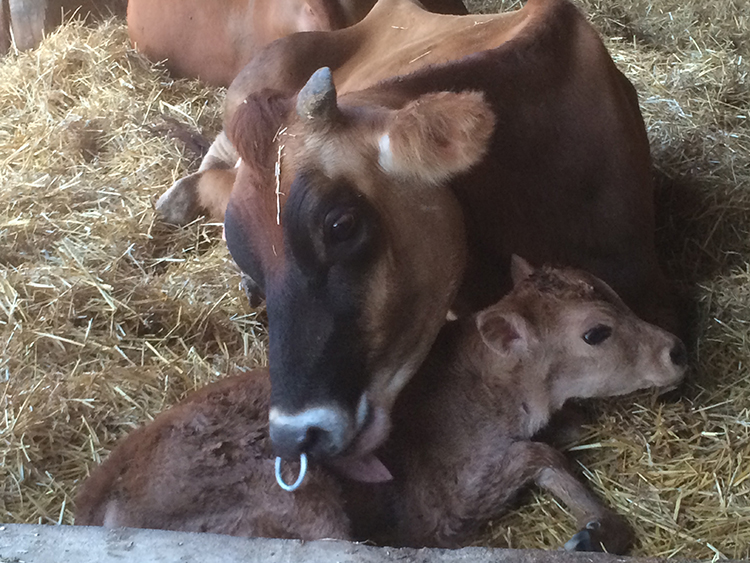
I was never going to write this article because frankly, it’s embarrassing. But my dad always taught us that if we don’t share our failures, how will we ever find solutions? Or, by sharing our failures and the solutions, we could potentially help others experiencing the same problems. So, here I go.
Over the last year, we’ve lost a lot of calves — way too many calves. Like, I should’ve typed that sentence in caps lock. Apparently, my embarrassment extends far enough that I won’t give you numbers, but it was . . . debilitating. It was heartbreaking.
We talked to everyone about it. We did necropsies, sent sick calves to the vet (and they didn’t all make it), talked to specialists, and even tried new antibiotics, probiotics, and supplements. We changed the milk replacer and grain we fed; we tried feeding whole milk for a while. We changed how we vaccinated the calves and the dry cows. We took blood samples, blood plasma samples, and changed the way we managed everything from the calf barn to the maternity pens to the dry cow lot. No one seemed to understand it. Then, with one random offhand comment, our vet put her finger on it.
So here’s the thing: we’ve been feeding our calves the same amount of colostrum for years. And I know, I know, the worst phrase in the English language is “Because that’s the way we’ve always done it.” And man is that true. We’ve always fed our calves a gallon of colostrum in the first 24 hours after birth. That’s one bottle as soon as possible and a second 12 hours later. And it’s worked. I mean, I’m working with Jersey calves here. They won’t drink a gallon of colostrum all at once, and I hate tubing them. I hate it. I’ve seen videos of other farmers tubing their calves and I don’t understand how they do it. Their calves just sit there quietly and let themselves be fed. Not Jersey calves. Even at an hour old, these adorable little brown hellions are twisting and kicking and fighting every second. It’s ridiculously unpleasant. But, after our vet made a comment about it, we started feeding them the full gallon as soon as possible. Usually, they’ll drink the first bottle, but we have to tube them the second. It’s unpleasant but necessary because since we started, we haven’t lost a calf.
Why is this embarrassing? Because we spent so much money, time, and energy trying to solve our problem when all we had to do was go back to the basics. There are so many options out there now and expert opinions on how to raise a strong, healthy calf that I think we get too caught up in the complexities of it all. I hate that this was how we learned our lesson, but it was a good lesson to learn. For centuries, people have raised animals with far less than we have today.
Don’t get me wrong, I believe in the new technology and science we have available to us today. Thanks to those technologies, farmers are saving money and producing a more economically, environmentally friendly product. But as we just proved, sometimes it’s better to go back to the basics.

The author dairies in partnership with her parents and brother at Spruce Row Farm in Pennsylvania. Jessica is a graduate of Pennsylvania State University, and since 2015, she has been active in promoting dairy in her local community. You can find her and her 250 Jersey cows on Facebook at Spruce Row Dairy or on Instagram at @seejessfarm.








